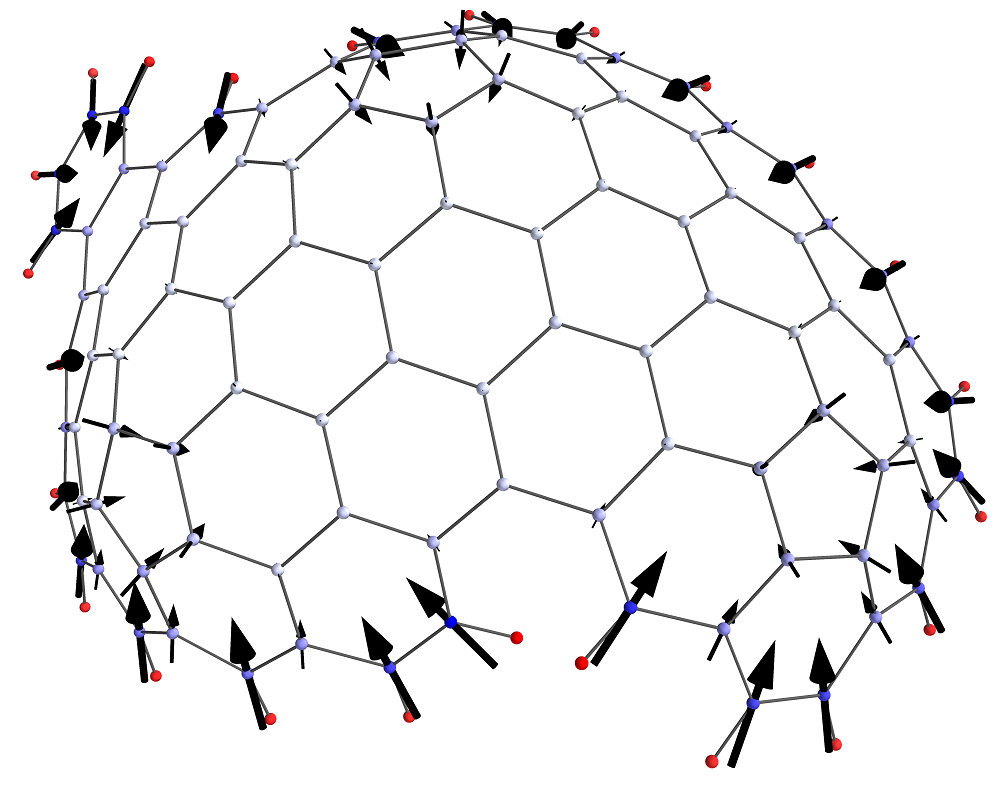Technical Report 188, c4e-Preprint Series, Cambridge
The polarisation of polycyclic aromatic hydrocarbons curved by pentagon incorporation: the role of the flexoelectric dipole
Reference: Technical Report 188, c4e-Preprint Series, Cambridge, 2017
- The dipole moment was calculated for a range of curved polycyclic aromatic hydrocarbons.
- The π-electronic flexoelectric effect is the main contributor to the dipole moment.
- Atom-centred point charge models of curved arenes are inadequate; point dipoles have to be accounted for.
 Curvature in polyaromatic hydrocarbons (PAHs), due to pentagon integration, produces a dipole moment that contributes significantly to self-assembly processes and adsorption at the surface of carbon materials containing curved structures. This work presents electronic structure calculations of the dipole moment for 18 different curved PAH molecules for various numbers of pentagons and total number of aromatic rings. A significant dipole moment was found that depends strongly on the number of aromatic rings (4-6.5 debye for ring count 10-20). The main cause for the dipole is shown to be the π-electron flexoelectric effect. An atom-centred partial charge representation of the charge distribution in these molecules is insufficient to correctly describe their electrostatic potential; distributed multipoles were instead required.
Curvature in polyaromatic hydrocarbons (PAHs), due to pentagon integration, produces a dipole moment that contributes significantly to self-assembly processes and adsorption at the surface of carbon materials containing curved structures. This work presents electronic structure calculations of the dipole moment for 18 different curved PAH molecules for various numbers of pentagons and total number of aromatic rings. A significant dipole moment was found that depends strongly on the number of aromatic rings (4-6.5 debye for ring count 10-20). The main cause for the dipole is shown to be the π-electron flexoelectric effect. An atom-centred partial charge representation of the charge distribution in these molecules is insufficient to correctly describe their electrostatic potential; distributed multipoles were instead required.
Material from this preprint has been published in The Journal of Physical Chemistry C.
PDF (6.4 MB)



